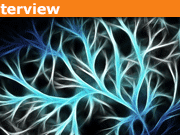5 Pieces of Evidence that Support Theory of Evolution
Table of Contents
Evidence for evolution
First, read:
What is Evolution: A Beginner’s Guide, What Is Evolution and How Does It Happen?, Evolution FAQ
Key Points
- Fossil record shows an increasing trend in complexity and similarity to modern creatures, suggesting a common ancestor Interspecies variation shows that parts of genomes that are the same code for characteristics that appeared longest ago, while parts that are different code for adaptations to different niches
- Unnecessary features such as the appendix, body hair and foreskin suggest remnants of organs once useful but now reduced away by evolution
- Current evolution and selective breeding examples show evolution in action now
- Evolution is logical consequence of mutation, heredity and natural selection occurring together
Here’s some of the evidence available for evolution:
Fossil record
The fossil record is the piece of classical evidence that is always given for evolution. Paleontologists digging at various sites across the world have always found the long preserved remains of exotic and mysterious creatures that clearly do not exist today. The important part is not what is so different from today, but the striking similarities they hold to current life. If we track the fossils in order of age, we find an interesting trend. As we get closer and closer to the modern-day, the fossils we find become more and more similar to modern creatures and more and more complex. As we go back in ages, the differences between species that appear greatly different become more and more blurred. What does this mean? It suggests that there is some mechanism for a trend of gradually increasing complexity in life and in the beginning, some sort of common ancestor, precisely what is predicted by evolution. We can trace the trend in evolution not just with fossils but also with evidence like stored ice cores way past the birds and fish of creationism to see how they developed. Not only this but we do get some transitional forms, species that appear “half evolved”.
Interspecies variation
If we look at life today across the spectrum, we see a combination of different and unexpected similarities. Humans appear very different from, say, mice, but in fact, the latest studies show that over 90% of the genomes are exactly the same. If we look at the parts that are the same and the parts that are different, we find that the same parts are the ones that are successful and fundamental to life, accounting for characteristics that appeared longest ago. Meanwhile, the more different parts code for characteristics that allow each species to adapt to their own niches. What doesn’t need changing doesn’t change across species. This fundamentally same yet different state across life suggests that each was not created separately but developed from a common ancestor. If we factor geography into this, we can see that certain species are concentrated in certain parts of the world, and there is generally a clear distribution of characteristics from place to place. This suggests evolutionary adaptation at work.
Unnecessary features
It is a little-known fact that large parts of the human body are surplus to requirements. The appendix, for example, serves no practical use in man and often causes problems necessitating removal. Body hair is almost completely useless given clothing, and even is a hindrance to cleanliness. A number of major religions have noticed the uselessness of the foreskin. This is not just true for humans – horses for example have vestigial side splints on each of their hooves. The best explanation for these useless features is that they are remnants of organs once useful, but no longer, in the process of being reduced away by evolution. For example, if we look at the appendices in herbivores, we can see they serve an important part in digesting difficult, fibrous matter. We can thus deduce that some long ancestor of man was an herbivore, but since then changes in human diet and environment rendered the organ pointless.
Current evolution
Today, we do see evolution happening right now. The best example is the case of bacteria gaining resistance. New bacteria like MRSA quickly mutate and gain resistance to antibiotics. This is an example of evolution in action. It follows that if evolution happens now, it is only logical it happens before and in the future. Over millions of years, minor changes inevitably merge as large general trends in evolution. Selective breeding is another example. Dogs are greatly different from wolves, but evolution with man providing the selective pressure accounts for its creation.
Logical evolution
One of the great strengths behind the process of evolution is that it MUST happen. If you ever have some opportunity for random chance, some system for hereditary features, and some form of selection, evolution will happen. One is a logical consequence of another. It is not surprising that change occurs, but it would be surprising if change does not. Computer programs have been written to simulate this. Indeed, one of the ideas for the next generation of artificial intelligence is not to program them but to allow them to program themselves, in a process of evolution. It is easy to show mutation (just think of cancer), heredity (look at family similarities) and natural selection (bigger animals do better than smaller ones) occurs, so evolution must occur in some shape or form.
FAQ
What is the evidence for evolution?
The evidence for evolution comes from a number of sources, including the fossil record, interspecies variation, unnecessary features, current evolution, and logical evolution.
What does the fossil record tell us about evolution?
The fossil record suggests that there is some mechanism for a trend of gradually increasing complexity in life, starting from some sort of common ancestor. As we go back in time, the differences between species that appear greatly different become more and more blurred.
What does interspecies variation tell us about evolution?
Interspecies variation suggests that each species was not created separately but developed from a common ancestor. We can also see that certain species are concentrated in certain parts of the world, and there is generally a clear distribution of characteristics from place to place.
How do we know that unnecessary features are evidence of evolution?
Unnecessary features are typically remnants of organs that were once useful, but no longer, and are being reduced away by evolution. For example, the appendix served an important part in digesting difficult, fibrous matter for some ancestor of man, but since then changes in human diet and environment rendered the organs unused.
I have a BS in Information Sciences from UW-Milwaukee. I’ve helped manage Physics Forums for over 22 years. I enjoy learning and discussing new scientific developments. STEM communication and policy are big interests as well. Currently a Sr. SEO Specialist at Shopify and writer at importsem.com








Leave a Reply
Want to join the discussion?Feel free to contribute!